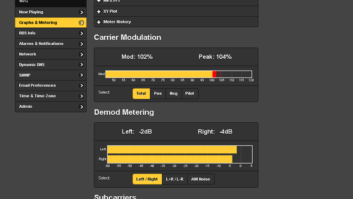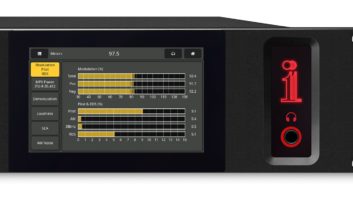This is the second in a new series of Q&As with Richard Strickland about RF safety. The first appeared in the NAB preview section of the Sept. 12 issue.
Question: There are RF personal monitors, and there are RF protective garments. Can both be used at the same time?
Answer: Standard RF personal monitors cannot be used with RF protective garments.
There is one special high-power monitor that is designed specifically for use with RF protective garments. The far too common practice among tower climbers of using a standard monitor under a protective garment is dangerous and should never be allowed!
Tower climbers sometimes wear a standard RF personal monitor under their RF garment or suit in the belief that the monitor will “see” what gets through the suit. Some consultants have even recommended this approach.
Unfortunately, the laws of physics prevent this combination from working properly.
The RF currents flowing through the stainless steel wire in the garments create small electric fields in close proximity to the fabric. When a monitor is worn under the garment, the fabric is often touching the monitor. Tests run on the monitors proved that the monitors do not work reliably when used this way.
One of two things will happen: the monitors will often alarm continuously due to the electromagnetic interference or, as is often the case, the electric fields will interfere with the control circuits and prevent the monitor from sounding its alarm when it should.
(click thumbnail)The Nardalert XT, also made in a high-power version with a distinguishing logo on the front.To solve this problem, the Nardalert XT high-power version was developed. (While at the company I headed the team that developed the Nardalert XT and decided on its features and many of its design details.) Rather than having a full-scale indication of 200 percent of standard — the FCC’s Maximum Permissible Exposure (MPE) limit for Occupational/Controlled exposure — this monitor has a full-scale range of 1,000 percent of the same MPE limit and is designed to be worn outside the RF protective garment.
Although some of the RF garments on the market claim to have an attenuation factor of far greater than 10 dB, I always recommend that climbers limit their exposure to a maximum of 1,000 percent of the MPE because other things can go wrong, and higher levels are extremely dangerous.
Thus, when the monitor indicates that 1,000 percent of the MPE limit has been reached, it is time to lower power levels even though you are wearing an RF protective garment.
One caution: One of my training clients had bought a number of high-power monitors for use on rooftops by personnel not using RF garments. I must caution everyone that these monitors are set to alarm at a level that is far too high for anyone not wearing an RF protective garment. When I pointed this out I could sense a significant level of “concern” on the phone.













